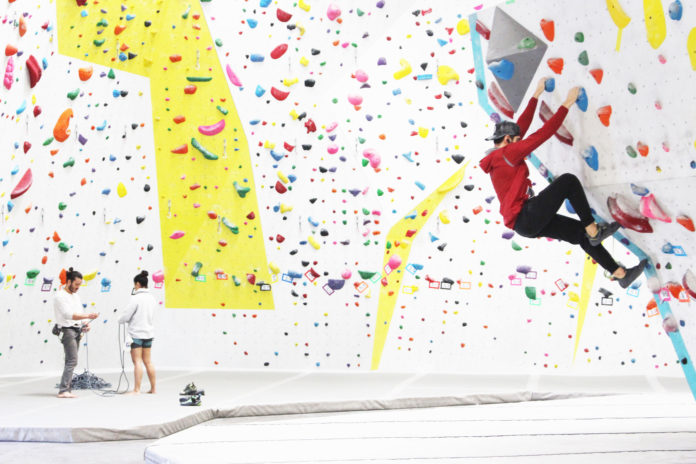
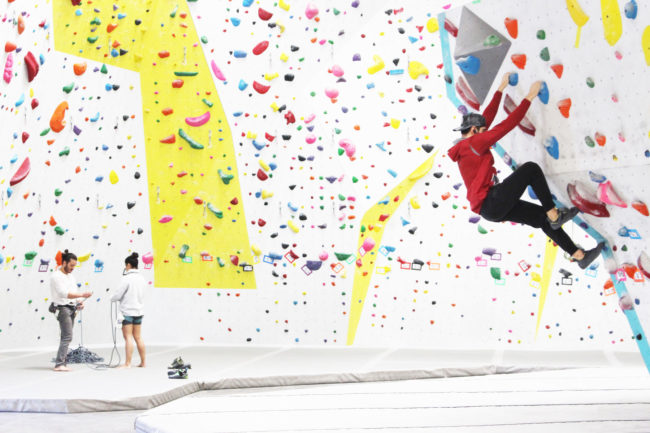
As a second wave of the pandemic approaches―and in many places around the world has already arrived―indoor climbing centers in North America have been preparing for the possibility of a second round of temporary closures. But not all locations are in the same position. Of the 41 climbing facilities listed as “temporarily closed” on CBJ’s map at the end of October, 31 of those facilities were located in the state of California.
A maverick of sorts politically of the 50 recognized U.S. states, California has received both praise and criticism for its policies over the years. In August, the state announced its Blueprint for a Safer Economy, a tiered reopening system. The system takes into account the adjusted case rate per 100,000 residents in a county and the positive test rate―and, most recently, a health equity index which considers the positive test rate of a county’s hardest hit neighborhoods. Based on these metrics, counties are given a tier (purple, red, orange, yellow) which determines the set of rules and capacity levels (0, 10, 25 or 50 percent, etc.) at which businesses in various industries can reopen. For climbing centers in hard-hit counties, that system has meant continued closure of their climbing walls.
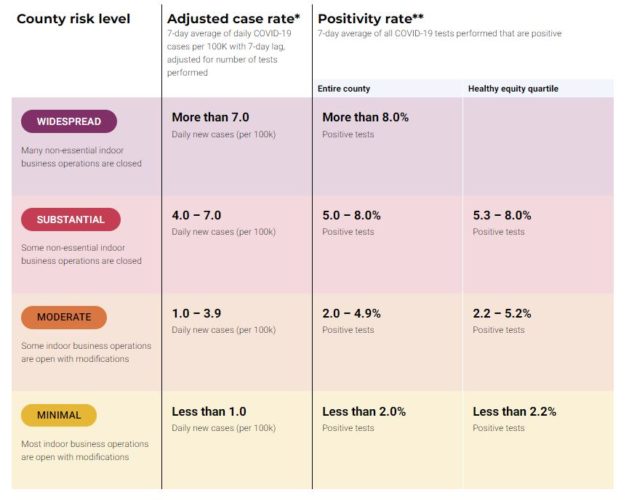
Caught between the state’s regulations and a lack of substantial financial aid at the federal level, California climbing centers have been pushing back against the structure and rollout of the tiered reopening system. But while some people in America have opposed even the smallest extra health measures based on arguments around personal liberties, the coalition is not among them. Based on interviews with a sampling of climbing center operators in California, the overwhelming takeaway from those discussions is that safety has been priority number one since the start of the pandemic. Instead, these conversations suggest the movement of climbing centers petitioning for the survival of their small businesses has taken place within the same enduring goal: the well-being of their communities.
The California Indoor Climbing Coalition
Announcing its formation in a press release on September 21, the California Indoor Climbing Coalition (CICC) was started by climbing center operators Kristin Horowitz and Alice Kao. Horowitz, co-founder of The Pad Climbing and CEO of Ascent Ventures, and Kao, CEO and co-founder of Sender One and the 2020 California Small Business Person of the Year, first met through the CWA’s Survive & Thrive Workshop on September 2-3. Since then, the pair have grown the coalition’s member base to 29 climbing center owners and 76 facilities altogether, more than 75 percent of the California facilities listed on CBJ’s map at the end of October.
“I have long wanted to do more than just watch things go by, but I knew that petitions and lawsuits weren’t the answer―either ineffective or expensive, and neither did a lot for community building which I was behind,” Horowitz told CBJ. “When I floated the idea of a lobbyist and a coalition to Alice, she was absolutely on board and I just needed that one other person to know I wasn’t chasing a pipe dream.”
The CICC has been lobbying primarily for the specific goal of California indoor climbing centers being allowed to reopen at 25 percent in the tiered reopening system, even in the most restrictive (purple) tier. Always conscious of risk management, the coalition argues that climbing centers are uniquely positioned to safely operate at that capacity level.
“While we fully support the purpose of the current county-by-county restrictions, we now know enough to move indoor climbing into less restrictive bounds,” reads the CICC homepage.
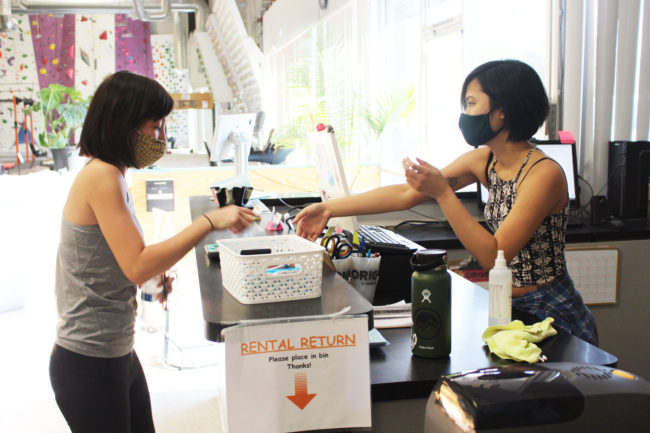
The CICC position letter to the governor of California, Gavin Newsom, and this fact sheet identify multiple reasons for this belief. They point out that climbing centers are often in spacious, well-ventilated buildings and put in place strict COVID-19 safety protocols. Plus, incoming evidence suggests chalk is unlikely to transmit COVID-19 on surfaces (and there are powerful liquid chalk options), and climbing is a relatively anaerobic activity which―when coupled with masks and other measures―reduces the likelihood of transmission through the air.
Thanks to the work of the coalition and its members, letters from industry leaders like the Climbing Wall Association and USA Climbing, and support from the scientists and professionals listed on the CICC website, the coalition won a victory towards its goal on October 20 on a familiar field of play.
The Classical Issue of Classification
There is a long history of indoor climbing and its risks being misunderstood by policy makers, from facility licensure to insurance. Last summer, for instance, the CWA announced an urgent regulatory challenge to a Senate bill in California which lumped youth climbing programs with all recreation camps.
Most recently, when the state of California released the new tiered reopening system, indoor climbing centers were not given their own classification. As a result, different local jurisdictions applied the state guidelines differently, with some counties grouping climbing facilities with fitness centers and other counties grouping them with family entertainment centers―despite their facility licensure status.
That distinction impacted climbing centers in the red tier the most, since fitness centers have been allowed to open indoor activities at 10% capacity in the red tier, while family entertainment centers cannot. Planet Granite Santa Clara, for example, announced on October 6 the closing of its climbing walls when the county of Santa Clara notified the operators that they were considered a family entertainment center.
Other local jurisdictions have applied stricter policies than the state guidelines. The city of San Francisco has reportedly operated one tier back and, on September 14, specifically called out climbing walls to remain closed. According to Jeffery Bowling, Creative + Business Development Director of Touchstone Climbing, Touchstone’s Dogpatch Boulders and Mission Cliffs facilities had already reopened alongside fitness centers when the city district attorney came in and had them reclosed. Bowling cited the inability to sanitize climbing holds as the initial reason given, and only later did classification come into play.

“We’re one of the biggest climbing gym companies in the state and we’ve heard nothing. We’ve tried to engage. We’ve tried to discuss…There’s no dialogue. And that’s been pretty frustrating, especially for an industry that clearly people at the state level are pretty ignorant about, just based on the decisions they’re making,” said Bowling.
After weeks of coalition building and lobbying, the coalition finally opened conversations with the Director of Go Biz and a Senior Advisor to Newsom. One week later, on October 20, the state of California adjusted its reopening guidelines to explicitly place indoor climbing centers within the fitness center category.
“We still have a long way to go―we’re looking at 25% capacity in Purple, not closure,” reads the CICC statement announcing the update. “But we’re so glad that the policy makers of California are doing what they can on such short notice to give our indoor climbing centers a chance.”
“A Nightmare” for Big Gym Chains
Still, climbing center operators noted more dynamics to California’s tiered reopening system as challenging to navigate―especially for multi-gym chains. One of those issues has been timing. The adjusted case rate and positive test rate are based on seven-day averages, and every Tuesday the state announces tier updates. For operators of facilities in different counties (and sometimes even different states), reacting to a reopening announcement with one-day notice was described as nothing short of a nightmare.
“For me personally, the most frustrating part is that we don’t know that we’re going to be allowed to reopen until the California governor [Gavin Newsom] does his press conferences―or right before the press conferences, when the numbers come out,” said Ethan Wright, Chief Managing Director of Hangar 18. “That’s awesome, except it’s tough finding out at 11:30am on a Tuesday that you’ll finally be allowed to open on Wednesday. I think that puts a lot of gyms in sort of a ‘stand-by’ mode, where they want to have everything ready and prepped for reopening, but they just don’t know if it will happen.”
Hangar 18 operates 11 facilities across four counties in Southern California, and according to Wright each of those counties has had a separate reopening date. Of course, operators can follow the figures online to try and anticipate tier changes. But there’s reportedly not always consistency in the trends, making it difficult to take business decisions with confidence. Wright recounts a recent situation where cases were dropping in San Bernardino county, so Hangar 18 did full cleanings of its facilities there. Before the announcement on Tuesday, cases suddenly spiked and the facilities had to remain closed.
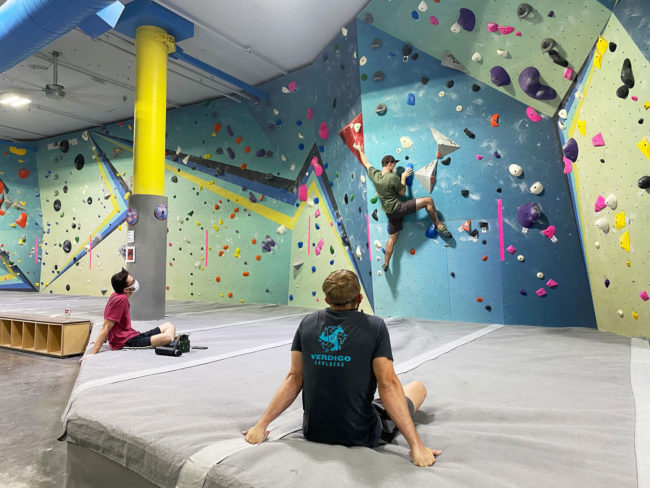
The stand-by mode has also been difficult for indoor climbing center employees. Touchstone operates over 12 facilities in California, from Sacramento to Los Angeles. At the end of October, four locations were open at 25 percent capacity (orange tier), four at ten (red), and four were still temporarily closed (purple). For many staff that’s meant continued furlough status, and it’s been challenging to recall staff on short notice.
“We kept everyone on payroll for the first couple months because we thought this was going to be short-term and we didn’t want to lose people, we just wanted to take care of our employees…We ended up having to furlough most of our staff…So we try to recall staff and then they shut us back down again. I mean, it’s just a nightmare for everyone involved, to be honest,” said Bowling. “And not to mention our membership. For a lot of our members, climbing is an essential part of their lives.”
Pivoting to Meet Member Demand
As the pandemic crisis drags on, climbing facilities have been getting creative to continue providing jobs to their staff and climbing to their customers in what they believe to be a safe environment to do so. Even in the purple tier, the state of California allows limited outdoor programming with modifications for businesses classified as fitness centers. Fixed climbing walls can’t be moved outside, but climbing facilities with customers interested in fitness offerings have found ways to pivot to meet the demand.
Bridges Rock Gym in Contra Costa county, for example, has continued offering some of the outdoor and virtual programming it relied on to engage members over the summer closure. Recently moved from the red tier (10 percent capacity) to the orange (25 percent), Bridges has been holding yoga classes in nearby parks.
“We are allowed to run indoor fitness classes, but we’re actually making the choice to keep most of our classes outdoors right now,” said Kenneth Pack, General Manager of Bridges. “We take our yoga and fitness programs seriously, it’s not just a side project for us.”
Bridges is not alone in the idea. Neighboring yoga studios have held outdoor classes as well, leaving outdoor parks crowded sometimes. The other challenge has been serving new visitors. Due to restricted capacity levels, many gyms have limited their offerings to members only on a reservation basis. Day pass, 10-punch pass and member guests are now welcomed back at Bridges as of November 1, but programs designed to welcome new visitors are not in full swing everywhere.
“I think at 25 or 50 percent, it is still difficult to run the kind of programming that we like to focus on that helps us create lifelong climbers,” said Pack. “Because time and space is at such a premium, it’s hard to hold our introductory classes, for example.”
Fortunately, climbing centers in California (and around the country) continue to be buoyed throughout this period by the gratitude of their members who choose to keep their memberships going.
“From the bottom of our hearts, we’re so incredibly grateful to our members for sticking with us through this closure. I think that’s the number one thing that I would say to anyone who’s having a hard time right now is just to look to your membership. Treat them as well as you can because they’re going to treat you well in return,” concluded Pack.
New Solutions to New Challenges
One of the ways California climbing centers have been trying to treat their members well in the tiered reopening system is by offering discounts for financially impacted individuals. Touchstone offers a 34% discount for unemployed members, and Sender One chose a similar discount level based on the unemployment rate in California.
Dubbed the CARE membership, over 200 members of Sender One have already enrolled in the plan. So as to avoid any stigma around signing up, all communication is done under confidence so that members don’t have to share proof of unemployment at the counter.
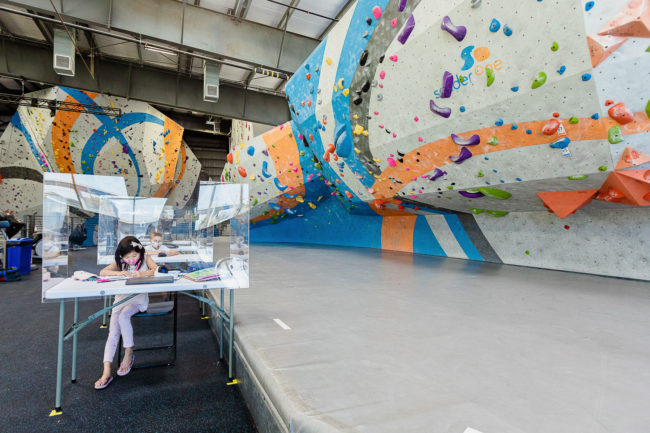
Sender One is applying a similar discount to scholarships for its new COOL camp. Like outdoor programming, camps in California are also allowed with modifications in the purple tier. Anticipating extended temporary closure of its LAX facility in the hard-hit county of Los Angeles, Sender One shifted its business model during the pandemic to hold even more camps. In addition to its regular summer camps, Sender One recently held a unique routesetting camp geared towards its team climbers. And since some schools have been holding virtual classes or a hybrid version, Sender One has been offering a distance learning option to support working parents searching for a place for their children to study.
“We did not focus on making money during the pandemic. We created these programs to build jobs, cover payroll and whatever expenses needed to establish said programs…We wanted to make sure the camp was available for families that need the distance learning support but may not be able to afford the full price,” said Crystal Tan, Brand Marketing Manager of Sender One.
There were rules to follow for COOL camp to be considered a camp in the tiered reopening system in California. The counselors aren’t teaching subjects or tutoring, for instance, but instead providing tech support and helping the students stay on track. Risk was also a focus. Sender One applied strict safety protocols, from health checks to pick-up/drop-off outside. But the camp has served the dual purpose of providing jobs for staff and a solution for working parents. And of course, the camp includes P.E. climbing breaks for the children.
“Sender One is not alone when developing these types of offerings and programs, because I think a lot of other climbing gyms have put in work to come up with ways to utilize their business while closed,” said Tan. “I reached out wanting to share about our program to provide the possibility of what our climbing gyms can offer back to our communities.”
To read more about Sender One’s COOL camp and CARE membership, check out the full interview with Crystal Tan here.

Climbing Business Journal is an independent news outlet dedicated to covering the indoor climbing industry. Here you will find the latest coverage of climbing industry news, gym developments, industry best practices, risk management, climbing competitions, youth coaching and routesetting. Have an article idea? CBJ loves to hear from readers like you!











